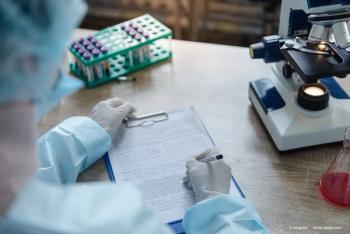
Research giants team up to investigate effective gene therapies for rare diseases
The newly formed Bespoke Gene Therapy Consortium (BGTC) will team up to beat rare diseases that are currently using gene therapy.
Reviewed by Luk H. Vandenberghe, PhD.
In unity there is strength, and this philosophy is expected to further spur the development of gene therapy for the millions of US patients with a rare disease.
The FDA and National Institutes of Health (NIH) are partnering with 15 private organizations to increase the numbers of effective gene therapies for rare diseases that affect as many as 30 million Americans.
Approximately 7000 rare diseases have been identified, but to date gene therapies have received FDA approval for only 2 inherited diseases.
This recognition has led to the formation of the Bespoke Gene Therapy Consortium (BGTC), which is part of the NIH Accelerating Medicines Partnership (AMP) program and project managed by the Foundation for the National Institutes of Health (FNIH).
The goals of BGTC are “to optimize and streamline the gene therapy development process to help fill the unmet medical needs of people with rare diseases.”
The 10 private partners in this endeavor are Biogen Inc, Cambridge, Massachusetts; Janssen Research & Development, LLC, Raritan, New Jersey; Novartis Institutes for BioMedical Research, Cambridge, Massachusetts; Pfizer Inc, New York, New York; Regenxbio Inc, Rockville, Maryland; Spark Therapeutics, Philadelphia, Pennsylvania; Takeda Pharmaceutical Company Limited, Deerfield, Illinois; Taysha Gene Therapies, Dallas, Texas; Thermo Fisher Scientific Inc, Waltham, Massachusetts; and Ultragenyx Pharmaceutical, Novato, California.
They are joined by 5 nonprofit partners: Alliance for Regenerative Medicine, Washington, DC; American Society of Gene & Cell Therapy, Milwaukee, Wisconsin; CureDuchenne, Newport Beach, California; National Organization for Rare Disorders, Quincy, Massachusetts; and National Institute for Innovation in Manufacturing Biopharmaceuticals, Newark, Delaware.
“Most rare diseases are caused by a defect in a single gene that could potentially be targeted with a customized or ‘bespoke’ therapy that corrects or replaces the defective gene,” said NIH Director Francis S. Collins, MD, PhD. “There are now significant opportunities to improve the complex development process for gene therapies that would accelerate scientific progress and, most importantly, provide benefit to patients by increasing the number of effective gene therapies.”
Standardization: key to technology
Developing gene therapies is a highly complex process that is time-consuming and expensive. In addition, the development process has limited access to tools and technologies and no standards across the field, and 1 disease is addressed at a time. A standardized therapeutic development model with a common gene delivery technology (ie, a vector) would facilitate a more efficient approach to developing gene therapies.
“By leveraging on experience with a platform technology and by standardizing processes, gene therapy product development can be accelerated to allow more timely access to promising new therapies for patients who need them most,” said Peter Marks, MD, PhD, director of the FDA’s Center for Biologics Evaluation and Research.
A primary aim of BGTC is to improve the understanding of the basic biology of a common gene delivery vector, the adeno-associated viral vector (AAV). The investigators plan to examine the biologic and mechanistic steps involved in AAV vector production, delivery of genes via vectors into human cells, and how therapeutic genes are activated in target cells, the results of which will provide important information to improve the efficiency of vector manufacturing and enhance the overall therapeutic benefit of AAV gene therapy.
BGTC also will develop a standard set of analytic tests to apply to the manufacture of AAV vectors created by the investigators with the goals of improving and accelerating the processes of vector manufacturing and production processes. Such tests could be broadly applicable to different manufacturing methods and make the process of developing gene therapies for very rare conditions much more efficient.
BCTC will then fund 4 to 6 clinical trials focused on different rare diseases that result from single-gene mutations and currently have no gene therapies of commercial programs under development. Different types of AAV vectors will be used in the trials that have been used in previous clinical trials. For these trials, BGTC will aim to shorten the path from studies in animal models of disease to human clinical trials.
Another function of BGTC is finding ways to streamline regulatory requirements and processes for the FDA approval of safe and effective gene therapies, including developing standardized approaches to preclinical testing (eg, toxicology studies).
BGTC is the first AMP initiative to focus on rare diseases. Other AMP projects bring together scientific talent and financial resources from academia, industry, philanthropy, and government and focus on improving the productivity of therapeutic development for common metabolic diseases, schizophrenia, Parkinson disease, Alzheimer disease, type 2 diabetes, and autoimmune rheumatoid arthritis for common metabolic diseases and systemic lupus erythematosus.
Luk H. Vandenberghe, PhD, director of the Grousbeck Gene Therapy Center and the Grousbeck Family Chair in Gene Therapy at Massachusetts Eye and Ear and associate professor of ophthalmology at Harvard Medical School in Boston, said the consortium effort around bespoke gene therapies led by the FDA and FNIH and supported by several leading industry group is timely and needed.
“Gene therapy has shown to be particularly powerful for many inherited disorders that by nature are rare,” he said. “Over the past years, through academia and industry efforts, the technology has shown its remarkable potential; however, the development of gene therapies for many diseases stalls due to the limited number of patients.”
According to Vandenberghe, the small number of patients brings practical challenges in conducting trials and also limited commercial appeal—which, together, limit investments in gene therapies for these very rare indications.
“This sad irony is particularly true for inherited retinal degenerations [IRDs], caused by over 200 genetic etiologies of disease and thus arguably in need of distinct solutions for each of them,” he concluded. “On the one side, Luxturna [voretigene neparvovec-rzyl, Spark Therapeutics, Inc], an IRD gene therapy, was the first FDA-approved AAV gene therapy, but on the other side, similar programs for other retinal disorders with equally compelling biology struggle to move forward in development due to their low prevalence.”
Luk H. Vandenberghe, PhD
E: luk_vandenberghe@meei.harvard.edu
Vandenberghe is a consultant to Novartis Gene Therapies and Albamunity, Inc. He holds patents for AAVCOVID and various AAV and adeno gene therapy and vaccine technologies, for which he receives royalties from University of Pennsylvania and Mass General Brigham.
Newsletter
Keep your retina practice on the forefront—subscribe for expert analysis and emerging trends in retinal disease management.











































